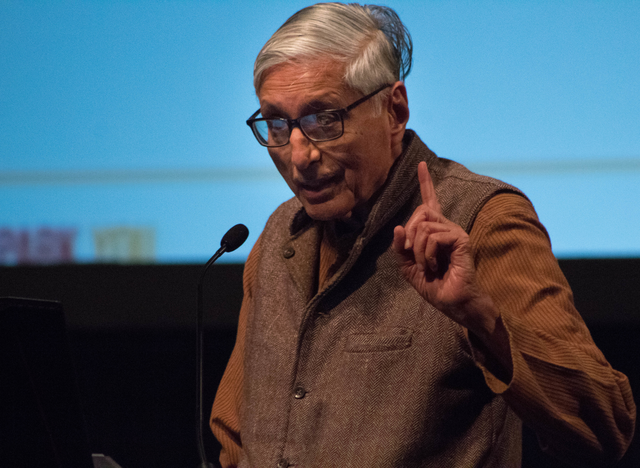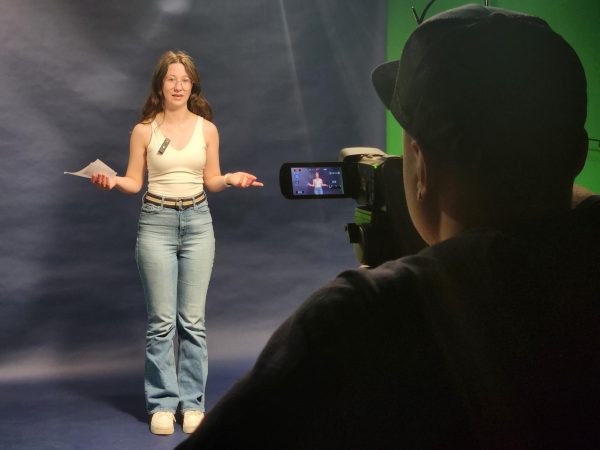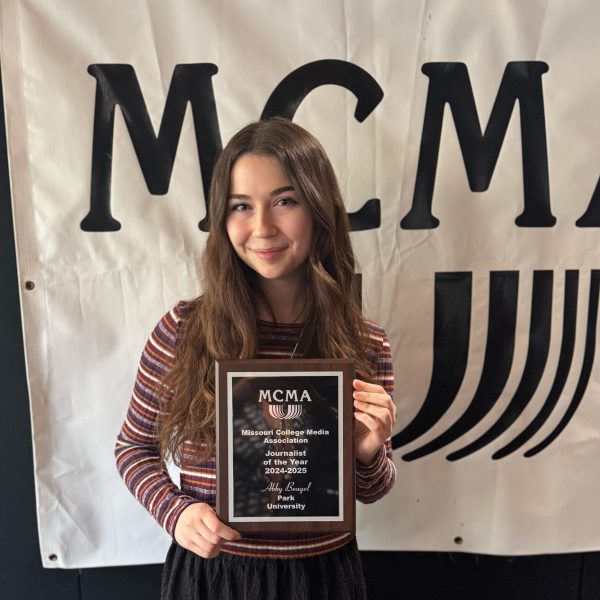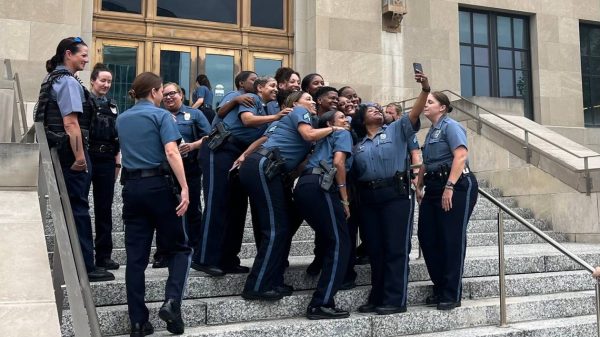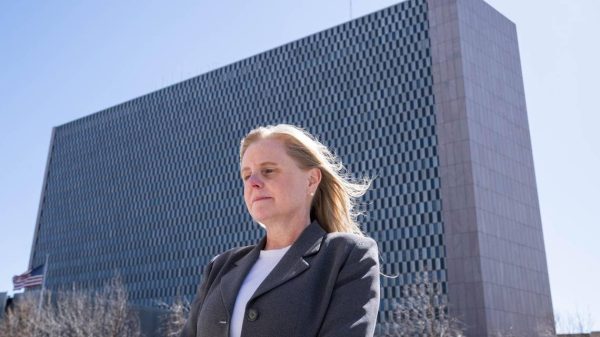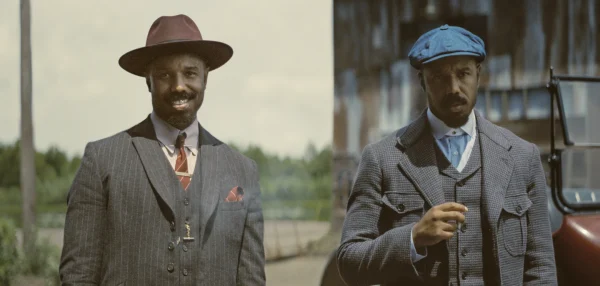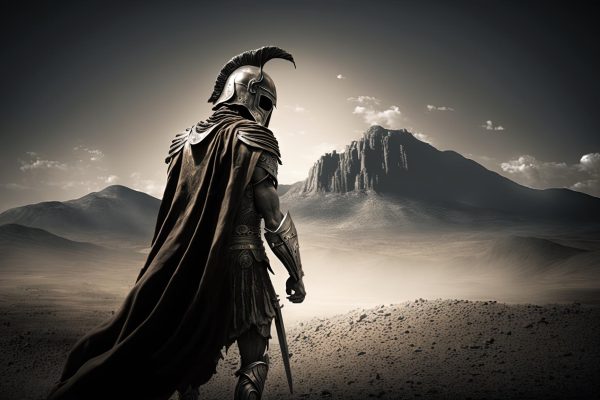A 7-decade struggle continues in Kashmir
Rajomohan Gandhi Speaks peace and love between Indians and Pakistanis
Rajmohan Gandhi, Ph.D., speaking about Mahatma Gandhi’s legacy of peace, in the Park University Chapel on Aug. 26.
Mahatma Gandhi created a legacy and inspired the world with his message and demonstration of non-violence and peaceful protest. But his home country is still facing serious conflicts more than 70 years after his death.
Ghandi’s grandson, Rajmohan Gandhi, Ph.D, research professor at the University of Illinois, visited the Parkville campus on Aug. 26 and 27 to speak about peace, peace journalism and his grandfather’s legacy. In an interview, he discussed the conflict between India and Pakistan, and said it is a point of worry for him.
“A good percentage of humanity lives in these two countries,” said Gandhi. “It should cause great concern to everyone in the world. Obvious reason, of course, each has a nuclear bomb. So many hundreds of millions of people are involved.”
There has been a conflict in India and Pakistan since the partition of the two countries in 1947. The center point of this conflict is Kashmir, a section of land is on the border of these two countries.
This conflict has escalated in the recent decade as Pakistan and India have become nuclear powers. As tensions rise, the voices for peace have been snuffed out.
According to the New York Times, Pakistan’s Prime Minister Imran Khan said, “There is no point in talking to [Indian officials]… Unfortunately, now when I look back, all the overtures that I was making for peace and dialogue, I think they took it for appeasement.”
“I was not very happy with the statement,” Gandhi said of Khan’s statement. “Although, the mood in the two countries, in the days prior to the statement had prepared us for that sort of statement. Things have been building up to this, unfortunately.”
When India gained its independence in 1947, it was a great victory for Mahatma Gandhi. That victory was short lived. When England gave up control, it separated British India into two countries. These two countries became India and Pakistan.
Pakistan was made to be a Muslim nation while India was made to be a Hindu nation. This distinction of religion caused the world’s largest mass migration. Upward of 10 million people were migrating to these new nations.
This was not a peaceful partition.
Zartasha Sani, a Park University alumna and Pakistan-American citizen, had grandparents that lived in British India at the time of the partition.
Sani had always noticed a tattoo on her grandfather’s arm as she grew up. The tattoo was just of his name. She asked her grandmother what is was.
“My grandma told me that when India and Pakistan separated and the partition happened, people were just senselessly killing other people…The reason he had to get that tattoo as a little boy… was so if he also got butchered or separated from his family… they would know where to bury his body,” she said.
Sani said this was an important distinction because people who follow the Hindu religion are supposed to be cremated after death and Muslims are supposed to be buried.
This struggle between India and Pakistan can still be seen in the Kashmir conflict.
“The nuclear power itself is not what worries me,” she said. “It’s the way we lost our humanity in 1947… The stories that I have heard from my elders have just shocked me to my core. That we as South Asians were capable of that kind of massacre. Six million Jews died in the holocaust and a million south Asians died because of needless violence after the [partition].”
Kashmir, for decades, has been an autonomous state of India. That ended on Aug. 5 when India’s Hindu nationalist government took away both Kashmir’s autonomy and their access to the internet. Kashmir has been in a media blackout ever since.
Sani said that she is also worried about how the media blackout is preventing third party journalists from covering the conflict in Kashmir in a neutral way. The world is only seeing what the Indian and Pakistani governments want the world to see.
“We have so much more in common than what sets us apart,” Sani said about Pakistanis and Indians.
Gandhi also said he believes there can be peace and dialogue between people from the two countries.
“To the extent that communication continues to be possible, peace lovers in the two countries should remain in touch with one another, encourage one another, express themselves,” said Gandhi. “And in countries like the U.S., Canada, Australia, UK and Western Europe, people of Indian and Pakistani origin can meet one another without restrictions. And in these places peace activists of Indian and Pakistani origin should get together and raise a common voice.”
Both Gandhi and Sani agreed that for students at Park, the best way to get involved is to pay attention to the news and to stay informed about Kashmir.
“They should do as much research as they can,” said Gandhi. “Understand the different dimensions of the conflict. They should generate concern in the United States and among United States lawmakers about the risks to world peace…and should urge [United States law makers] to use its best diplomatic clout to bring the two countries closer together.”
Your donation will support the student journalists of Park University. Your contribution will allow us to cover our annual website hosting costs, freeing up other funds for equipment, printing and training.



